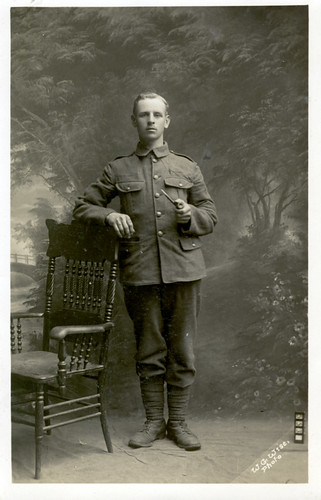The First World War: this young soldier would have played his part; perhaps one of the nearly 900,000 British men killed in action. Or one of the over 1.6 million wounded. But there is nothing in the backdrop or prop that points us towards that tale. Just the costume.
So what story does the scenery tell us? A soldier stands in a landscape; an idyllic world seemingly untouched yet threatened by a war in which the soldier has yet to play his part. (Or rather, the war has yet to play a part in the soldier’s life: an important distinction, for if the story or ‘play’ is History, then this soldier’s part would be a minor one. Imagine a vast stage, filled with hundreds, maybe thousands of actors. Most of them would say nothing, remaining part of the anonymous ‘chorus’ (exiting and entering the stage) leaving the lead actors, playing the parts of named politicians and Generals, to speak any lines. Yet of course, in his own life story, this soldier would play the lead. It would be as if towards the end of the ‘play’, one of those hundreds or thousands of extras making up the chorus, would step forward and begin to speak.)
